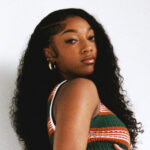The last episode of “The New Look,” the Apple TV+ series about Christian Dior, Coco Chanel and the birth of post-World War II fashion, aired on April 4. A fictional take on the choices those designers had to make to survive, the show offered its own new look, not just at the origin story of a dress style, but at the actual characters behind the brands. Here, the Styles editor Stella Bugbee and the fashion critic Vanessa Friedman debate the possible repercussions for the two dominant red carpet names.
Vanessa Friedman So my big question, after watching the whole series, is, Will this change how people think about Dior and Chanel? Those brands, after all, bear the names of their founders, and this show is the first time I expect most viewers will have been confronted with the idea of them as real individuals, with many — in the case of Gabrielle “Coco” Chanel, who is depicted as a Nazi collaborator, even if a somewhat unintentional one, very many — human frailties. What do you think?
Stella Bugbee It has the potential to personalize these megabrands — for better or worse, since the show is riddled with factual inaccuracies. While pointing to Mademoiselle Chanel’s Nazi past, the show paints her choices as something almost verging on feminism. It’s a tidy bit of propaganda in a way. And as for Monsieur Dior, it takes pains to paint him as a success almost despite himself.
But the best way it humanizes these characters is through the compelling performances of Ben Mendelsohn and Juliette Binoche. I was rooting for both of them. And I found that I wanted to know more about each brand, so that seems like a win.
VF Dior comes off as the hero of the series, while Chanel is the villain, even if, as you say, she has a feminist bent, especially when she is confronting the Wertheimers, her backers, about getting a more even split of the proceeds. They ask her how she could use their Jewishness against them, and she asks them if they have ever considered what it is to be a single woman running her own business (a complicated equivalency).
But I did find it notable that the current-day Dior brand supported the series by allowing the filmmakers into their archive so they could see the actual dresses, while Chanel-the-brand was not involved. That said, I was struck by how little actual fashion there was in the series. I wish there had been more of it.
SB Yes! That one brief scene in the Dior atelier dressing room as the models were getting ready for his first show — that energy and glamour and clamor of them applying their own makeup — I wanted more of it.
VF One of the issues the series raises is the perennial: Can you separate the artist from their art? Does it matter if Chanel was a terrible person or Dior was superstitious to an almost debilitating extreme, if what they made changed how we all dress? And yet, because we saw so little of the fashion, the justification for focusing on the people behind the brands seemed less convincing. The only real Chanel clothing we got to see was what Chanel herself was wearing: the pearls, the easy jackets and cocktail dresses. And yet, she was as important a figure when it comes to what we wear as Dior.
At the same time, when I spoke to the creator, Todd A. Kessler (also the director, and a writer and exec producer), he told me he conceived of this series the way he conceived of “The Sopranos,” which was also his brain child — as a human story that just happened to be set in a world we all love to imagine.
SB That’s interesting. To that end, one of my favorite elements of the show (and I have no idea if it is accurate) was the close relationships between Pierre Balmain, Cristóbal Balenciaga and Christian Dior. Their conversations, friendship and rivalry was a treat to see reenacted.
VF And Pierre Cardin! The young Cardin, who got a job at the Dior house, was one of the most engaging, exuberant characters to me. I did think it was funny to see the egotistic Balmain, the confident Balenciaga. Though I missed the other women who were working at the time, like Elsa Schiaparelli and Jeanne Lanvin. I can imagine they might have had a lot of fun with Schiaparelli.
SB Yes! So much fun. Did you like Glenn Close as the Harper’s Bazaar editor Carmel Snow?
VF It was a good reminder of a time when magazine editors could actually make or break a designer. It is probably unimaginable to many today, but she had been sent to Paris to crown the Next Big Thing, and so she did.
SB I loved the scenes between Mrs. Snow and Mlle. Chanel, who looked so much more modern and at ease in her own clothes than Mrs. Snow looked. It made me reconsider Chanel as a casual brand. I know that the brand was born of Chanel’s wanting more ease and movement and pockets and whatnot, but seeing the elegant costumes on Juliette Binoche gave me a new appreciation for that idea. So I guess, to answer your first question: Yes, it humanized the brands for me.
VF She wanted women to be able to ride a bike — an admirable, thoroughly modern, goal.
SB A woman after my own heart, in that regard at least.
VF Dior’s clothes, of course, represented another, much more structured and formal take on fashion, as we see in that last scene. It’s either a perfect endpoint — or a teaser for what is coming next. Mr. Kessler and his producer, Lorenzo di Bonaventura, told me they had envisioned this as a five-part series that would take Dior and Chanel through the arc of their postwar lives. So Chanel, on to her great second coming, and Dior through his death and the ascension of Yves Saint Laurent. Apple hasn’t announced whether this is actually happening, but it’s a tantalizing idea. And it could jump-start a whole fashion film trend.
SB I, for one, hope they continue this series, not least because I want to see who they cast as Yves Saint Laurent!


